DINER: Disorder-Invariant
Implicit Neural Representation
CVPR 2023 (Highlight Paper)
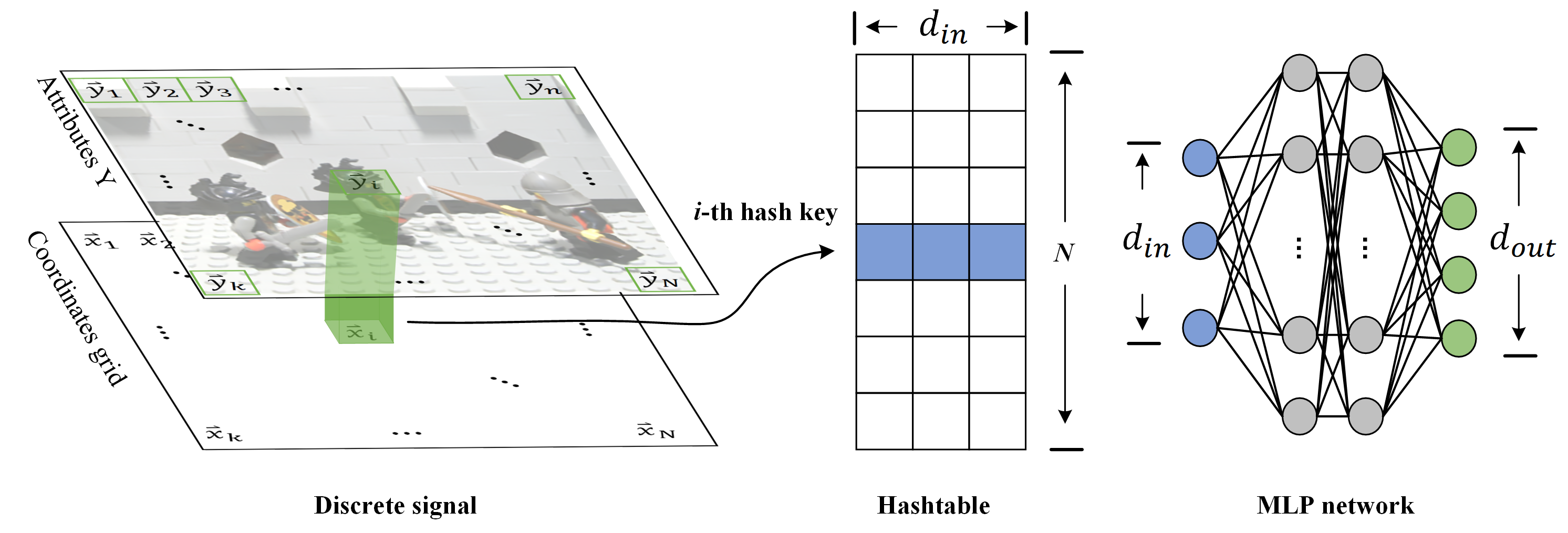
Pipeline of the DINER.
Abstract
Implicit neural representation (INR) characterizes the attributes of a signal as a function of corresponding coordinates which emerges as a sharp weapon for solving inverse problems. However, the capacity of INR is limited by the spectral bias in the network training. In this paper, we find that such a frequency-related problem could be largely solved by re-arranging the coordinates of the input signal, for which we propose the disorder-invariant implicit neural representation (DINER) by augmenting a hash-table to a traditional INR backbone. Given discrete signals sharing the same histogram of attributes and different arrangement orders, the hash-table could project the coordinates into the same distribution for which the mapped signal can be better modeled using the subsequent INR network, leading to significantly alleviated spectral bias. Experiments not only reveal the generalization of the DINER for different INR backbones (MLP vs. SIREN) and various tasks (image/video representation, phase retrieval, and refractive index recovery) but also show the superiority over the state-of-the-art algorithms both in quality and speed.
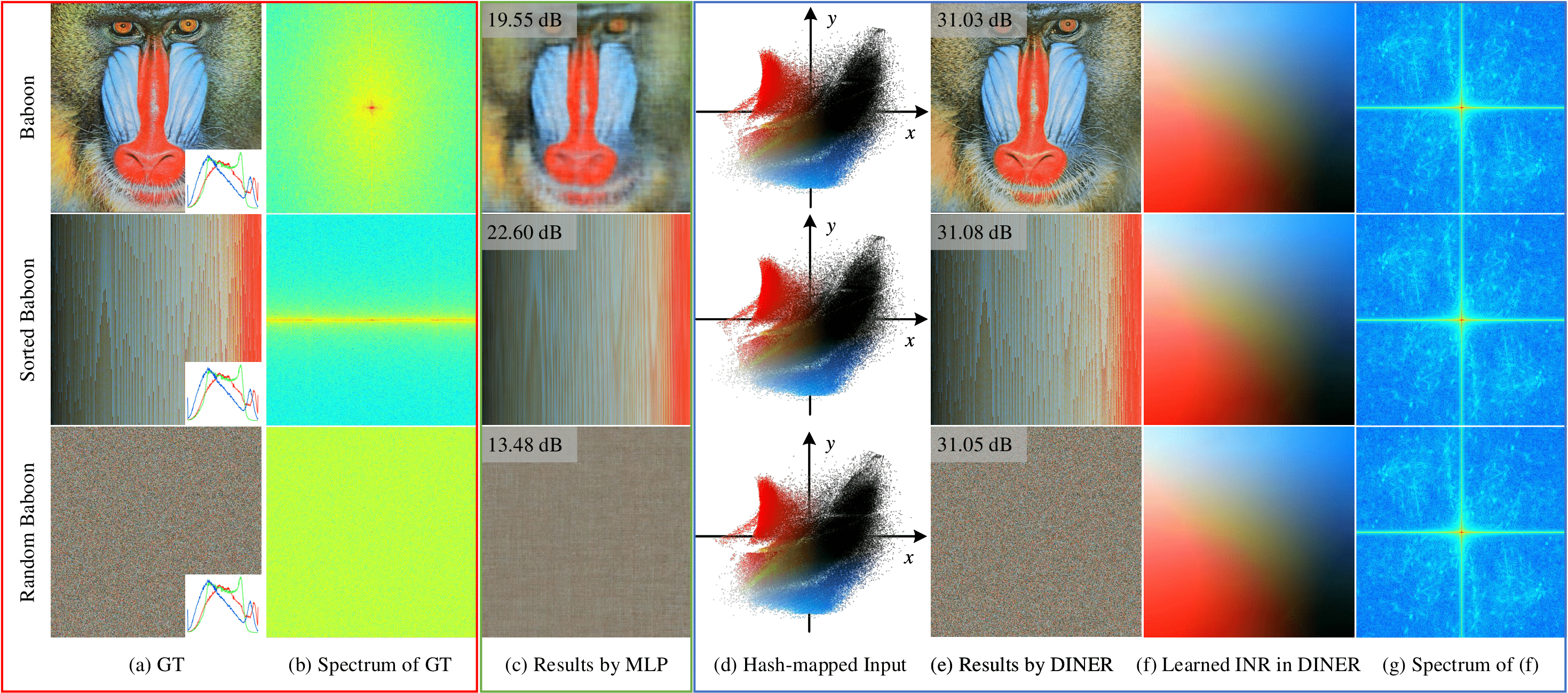
Comparisons of the existing INR and DINER for representing Baboon with different arrangements. From top to bottom, pixels in the Baboon are arranged in different geometric orders, while the histogram is not changed (the right-bottom panel in (a)). From left to right, (a) and (b) refer to the ground truth image and its Fourier spectrum. (c) contains results by an MLP with positional encoding (PE+MLP) [38] at a size of 2 × 64. (d) refers to the hash-mapped coordinates. (e) refers to the results of the DINER that uses the same-size MLP as (c). (f) refers to the learned INR in DINER by directly feeding grid coordinates to the trained MLP (see Sec. 4.1 for more details).(g) is the Fourier spectrum of (f). (g) shares the same scale bar with (b).
Experiments
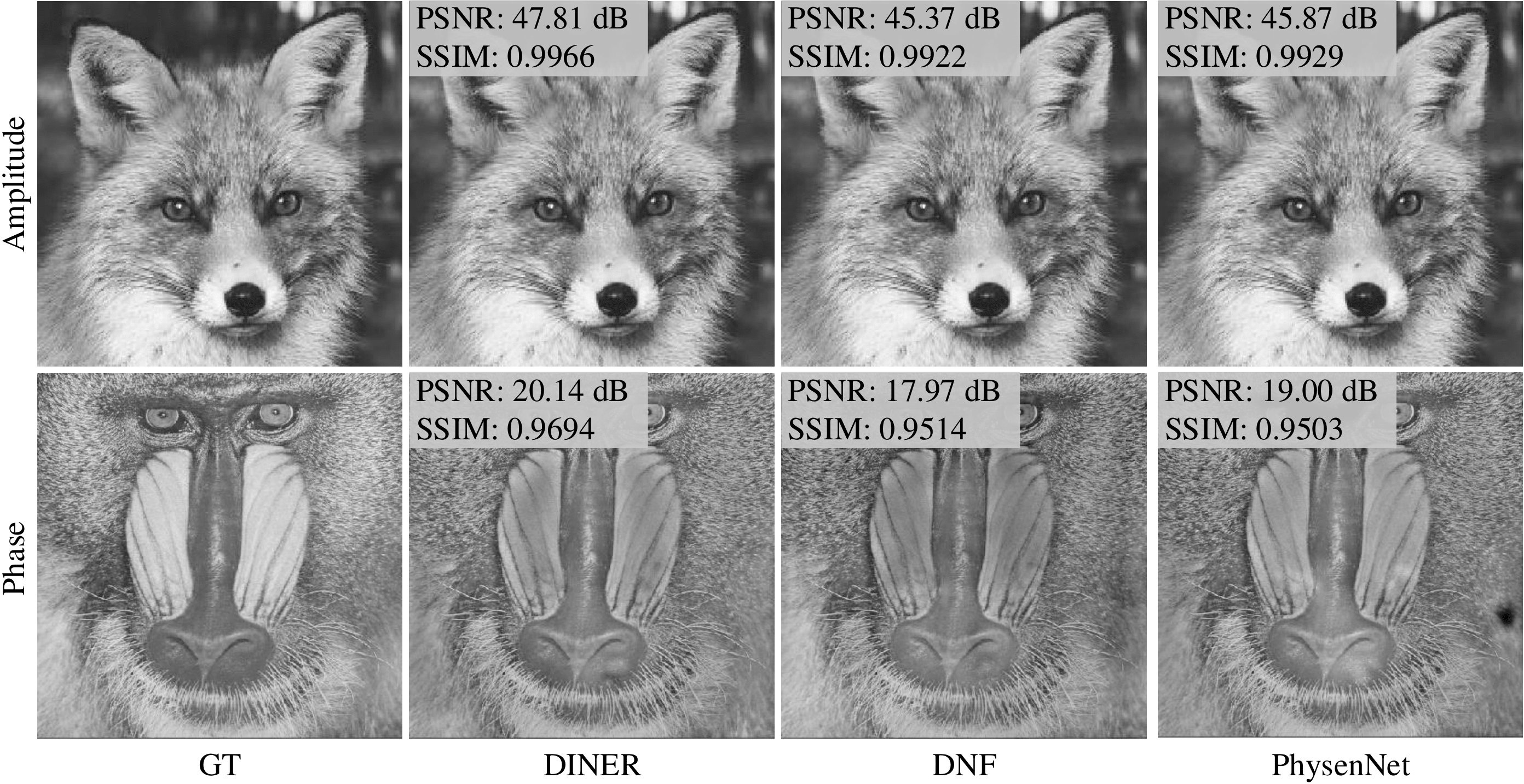
Comparisons on lensless imaging.
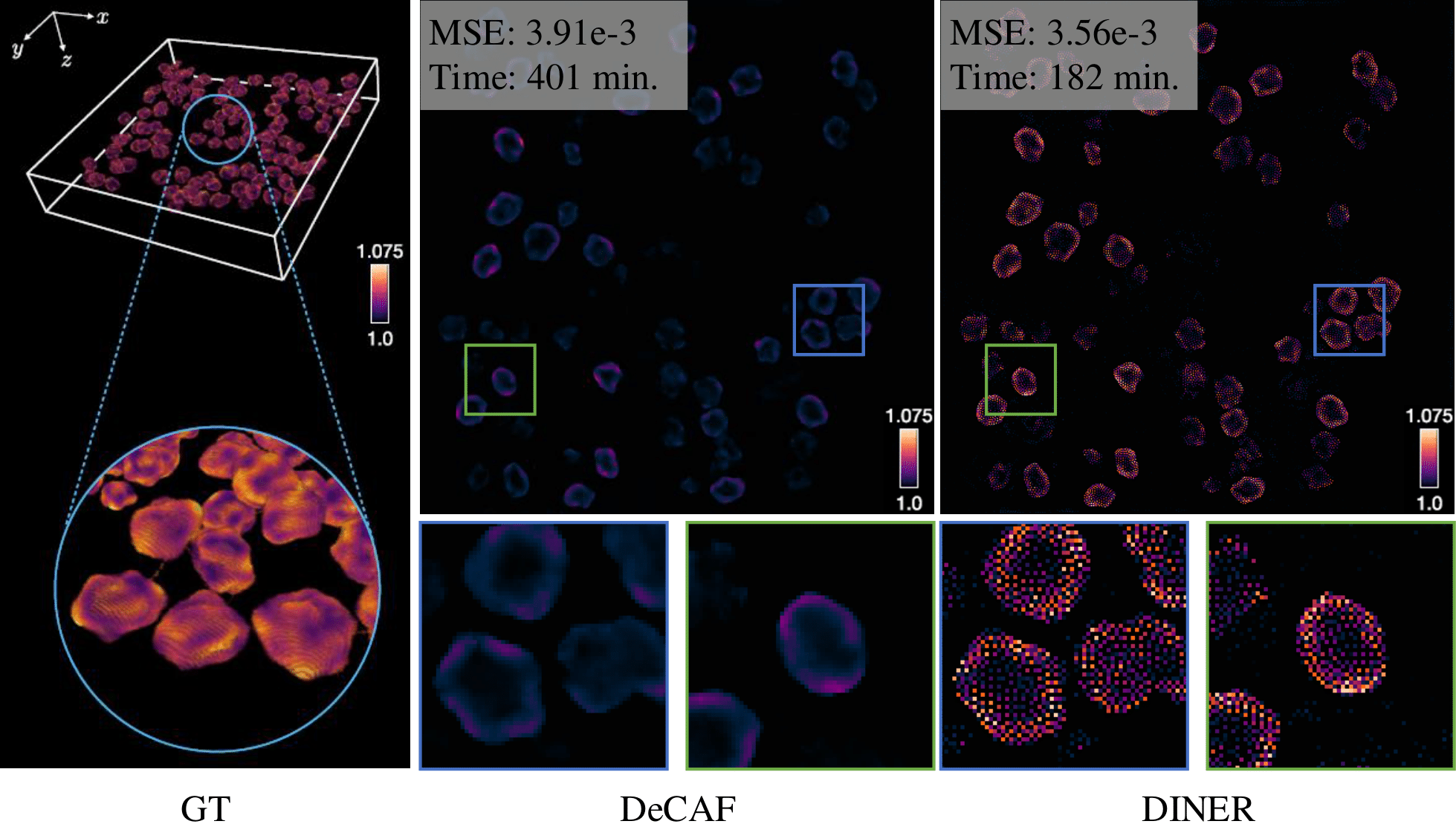
Comparisons on 3D refractive index recovery. DINER takes less training time and could reconstruct more surface details of the Granulocyte.
Learned INRs
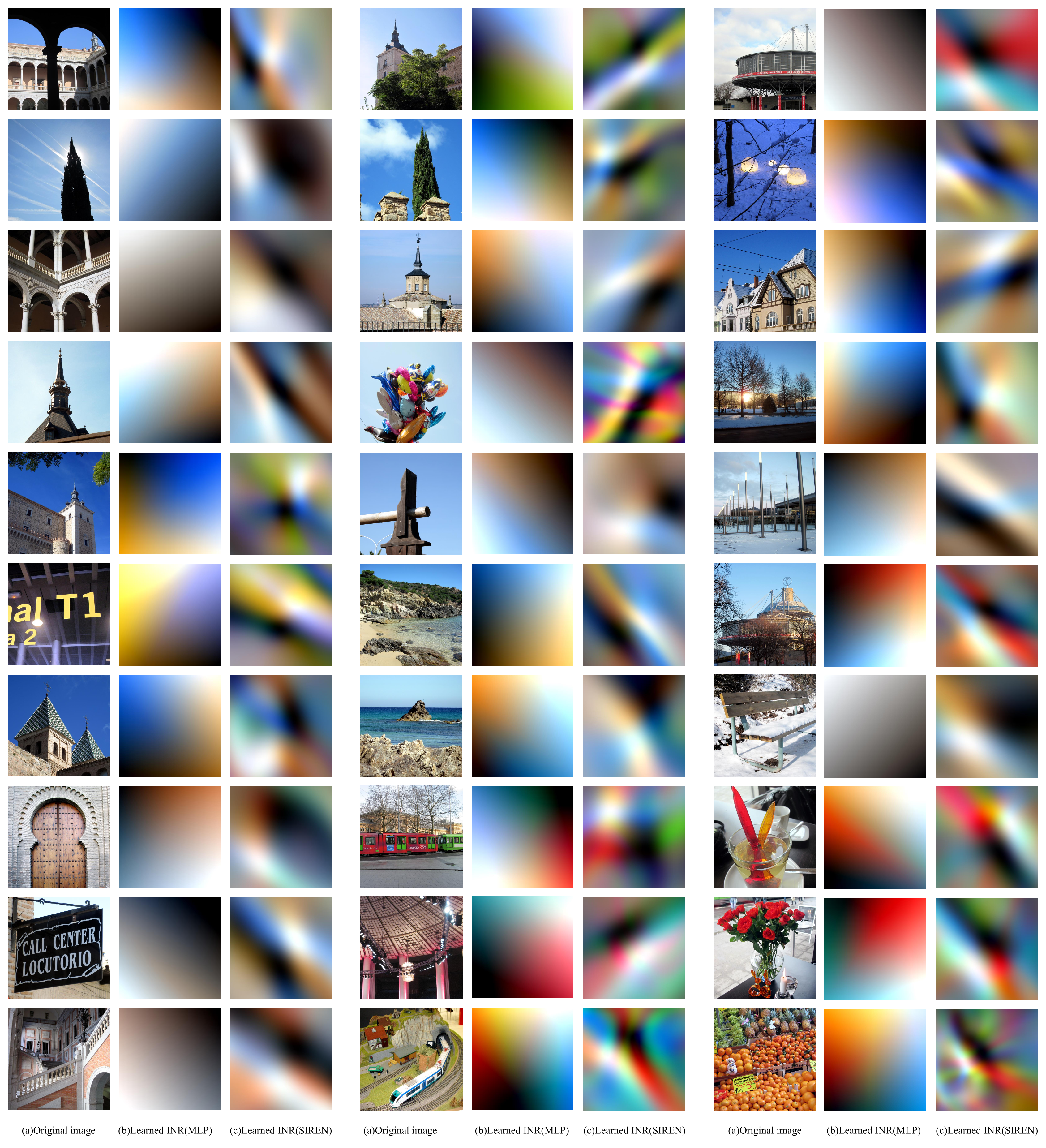
Hash features.
Citation
Acknowledgements
The website template was borrowed from Michaël Gharbi.